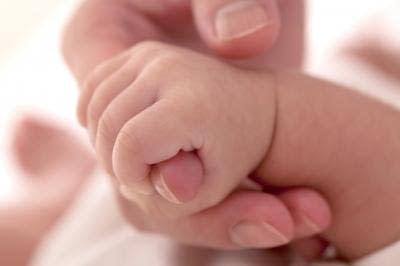Last week on the blog, I shared my favorite movement song to use in my sessions with babies.
That inspired me to want to share with you today some of the key components I include in my music therapy sessions with babies and their caregivers.
1. The first, of course, is movement!
Movement is so important when we work with young children. It not only wakes up the body, it wakes up the brain and gets little ones ready to take in new information and learn. I always use an original song that prompts children to move body parts or a manipulative like the scarf or parachute. (Click here to watch my video series on how to incorporate even more movement into your music therapy sessions!)
2. Fingerplays
Fingerplays combine rhymes with simple finger movements. Where is Thumbkin? and Five Little Monkeys Jumping on the Bed are two great examples. Fingerplays allow you to work on fine motor skills, early literacy skills, expressive language and memory in a fun and engaging way.
Dos Manitas, Diez Deditos is one of my favorite Spanish fingerplays to use in my sessions!
3. Love time
I always like to plan in time to work on building the connection and bond between the baby and caregiver. I also use it as an opportunity to teach caregivers how they can interact with their baby. Some examples include having the baby sit in the caregiver’s lap and sway while we sing together or singing a song about giving kisses and hugs.
4. Familiar songs
I am a huge advocate of using songs that are original during my music therapy session to ensure they are goal-oriented. However, I do incorporate familiar/pre-exisiting songs in my sessions with babies and caregivers for a very specific purpose. My goal is to promote bonding and build the connection between the baby and their caregiver. So we end the session by singing familiar songs (like “Twinkle Twinkle” or “Wheels on the Bus”) all together. When we do this, I can teach the caregiver how to sing with their child, use expressive facial features, and incorporate movements.
Also, with music programs being cut from preschools and schools and with the increase of technology, I’ve found that many children don’t know the traditional, “familiar” songs we grew up with. I like to incorporate those songs into my sessions to ensure we are passing them on to the next generation. Might sound silly, but I believe it’s important!
I hope this provides you with a little inspiration if you facilitate sessions for babies and their caregivers.
Those are some of my favorite sessions to lead all week!
What are some of the key components you include in your baby music therapy sessions? Leave a comment below to let us know!
Image courtesy of [Nutdanai Apikhomboonwaroot] at FreeDigitalPhotos.net




Leave A Comment